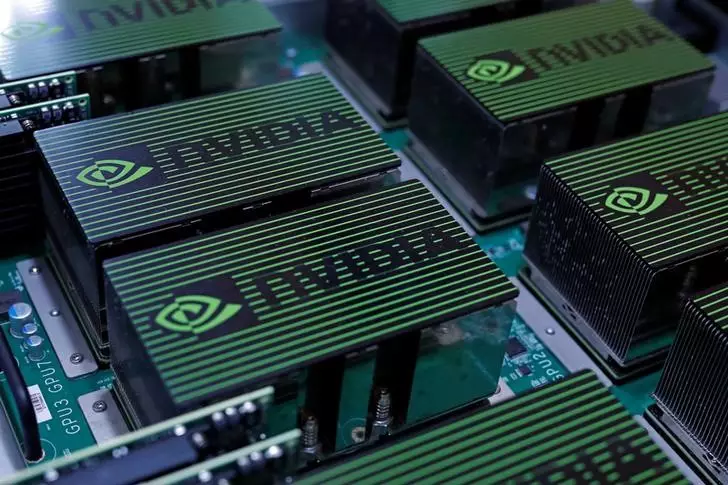As Nvidia’s CEO, Jensen Huang, prepares to unveil new flagship products at the company’s annual developer conference, questions arise about how long Nvidia can hold onto its position as the dominant supplier of artificial intelligence chips. With expectations of 16,000 attendees at the live event, doubling the number of the previous in-person conference in 2019, Nvidia’s market capitalization has soared, coming close to surpassing Apple as the second-most valuable company on Wall Street.
While Nvidia’s revenue is expected to skyrocket by 81% this year, outperforming the chipmaker Intel, which was known for dominating the personal computer boom, the real challenge lies in whether Nvidia can maintain its lead in AI computing for the long term. With analysts predicting the launch of the next generation high-end AI processor called the B100, Nvidia aims to solidify its position in the ever-evolving AI landscape, where demand for cutting-edge AI chips has already outpaced supply.
Despite the phenomenal surge in Nvidia’s stock price, reaching an 83% increase in 2024 after tripling in the previous year, concerns linger about the sustainability of such rapid growth. Analysts warn that if the lofty earnings estimates fall short, Nvidia’s stock valuation could plummet. However, with a PE ratio of 34, which is lower than the previous year’s 58, Nvidia seems to be on a steady trajectory, although uncertainties remain about the company’s future performance.
Apart from hardware innovations, Nvidia is also focusing on enhancing its software ecosystem with updates to CUDA, a platform that aids developers in running their AI programs on Nvidia’s chips. By offering a comprehensive software suite and cloud services to developers, Nvidia aims to create a more seamless and integrated experience, making it harder for competitors like Advanced Mirco Devices and Microsoft to lure customers away. Analysts are keenly observing Nvidia’s foray into the services side as a potential game-changer for the company’s growth.
One of the critical hurdles that Nvidia faces is the geopolitical landscape, particularly in China, where access to advanced chips has been restricted by the US government. Chinese rivals, led by Huawei Technologies Co, are striving to bridge the performance gap with Nvidia’s top-of-the-line chips. However, Nvidia’s forthcoming B100 chip is expected to widen the technology gap further, posing a challenge for Chinese companies to catch up. As the global semiconductor race intensifies, Nvidia’s ability to maintain its technological edge will be crucial in shaping its future.
Nvidia’s success in the AI chip market hinges on its ability to innovate consistently, adapt to changing market dynamics, and stay ahead of the competition. With rapid advancements in AI technologies and increasing demand for powerful computing solutions, Nvidia faces both opportunities and challenges in maintaining its leadership position. As Jensen Huang takes the stage at the developer conference, the tech world awaits the unveiling of Nvidia’s latest offerings, which will determine the company’s trajectory in the evolving landscape of artificial intelligence chips.

